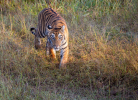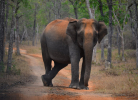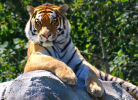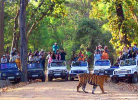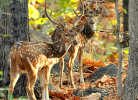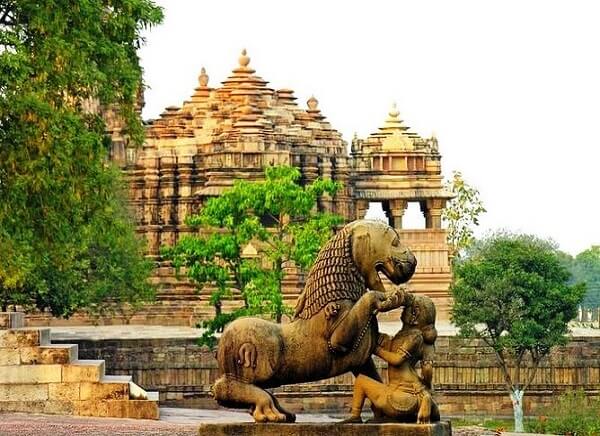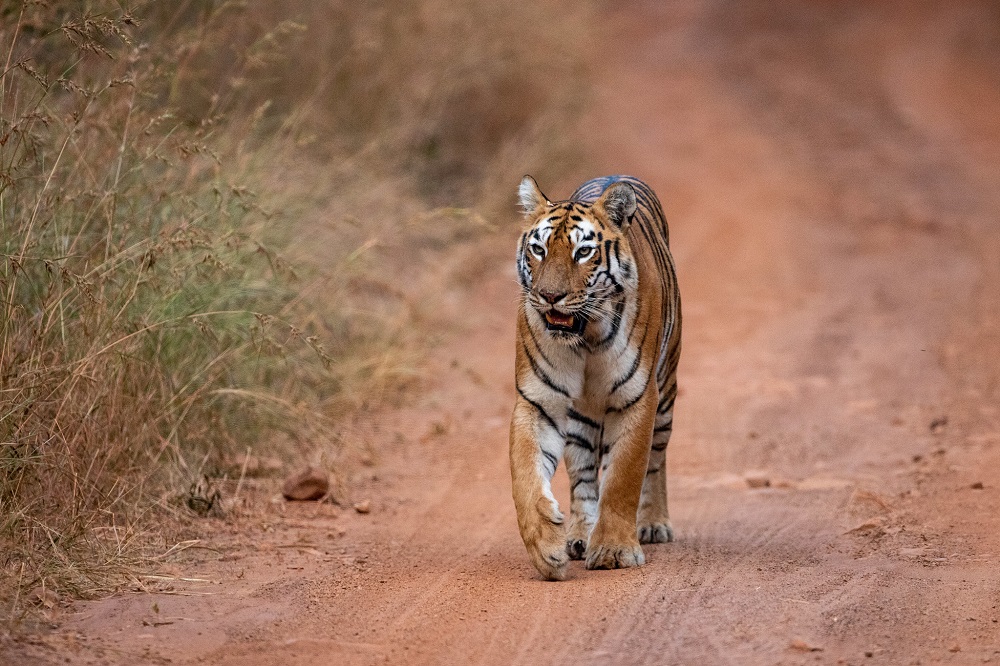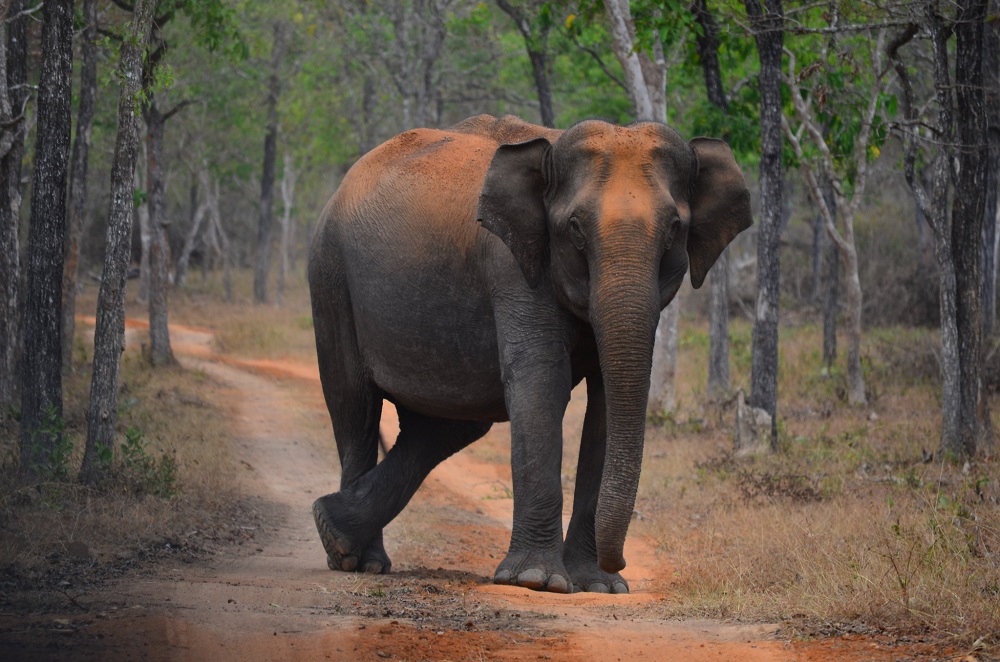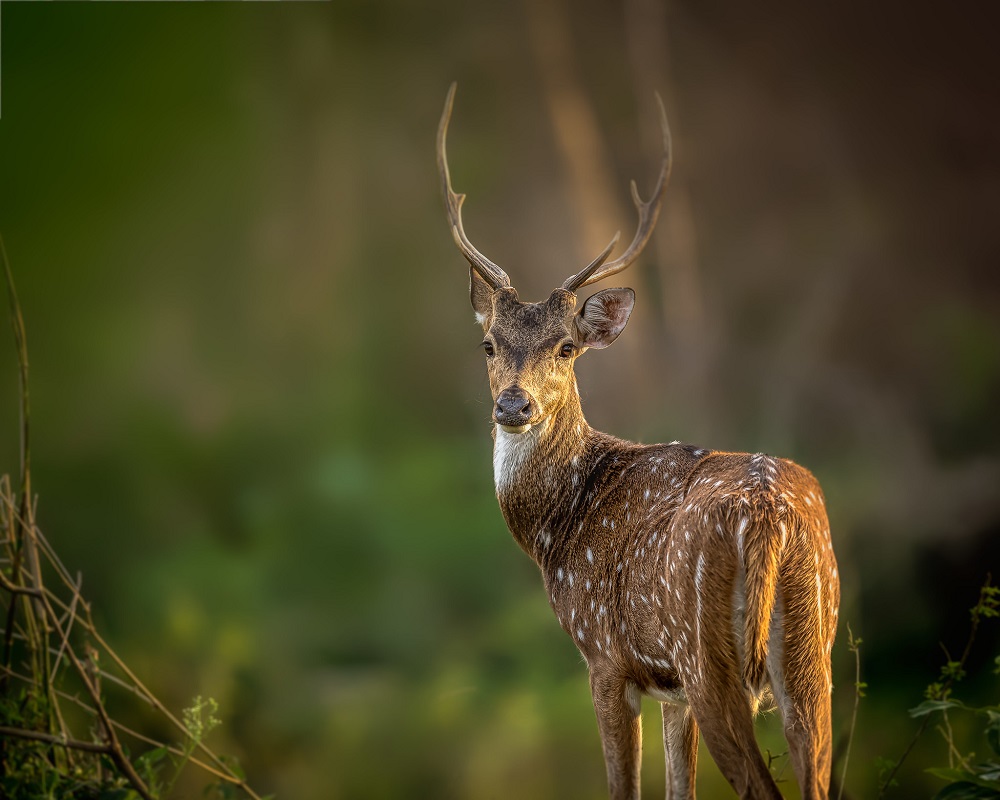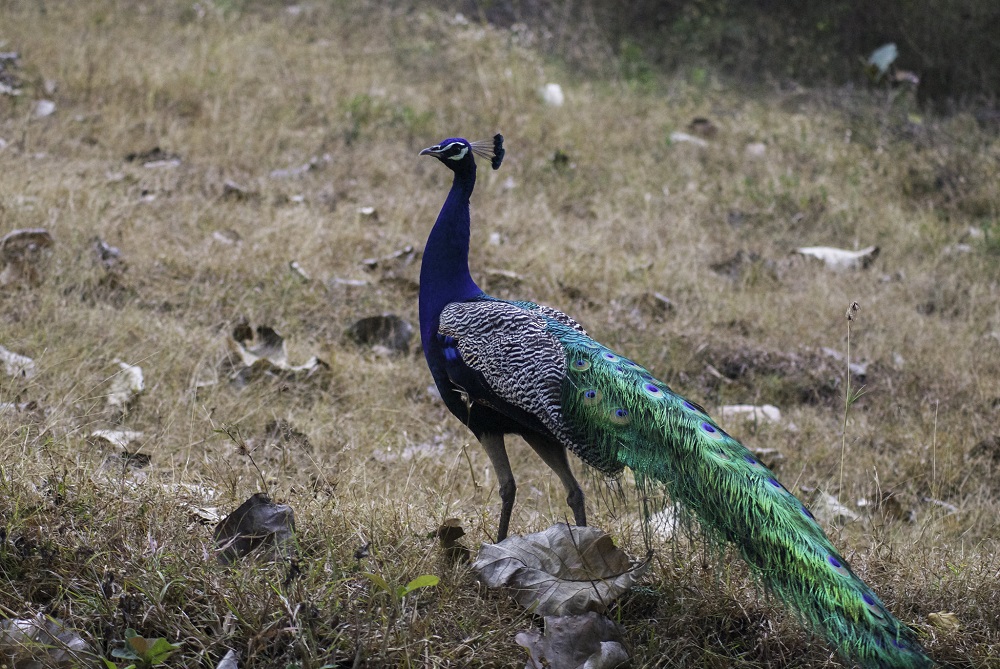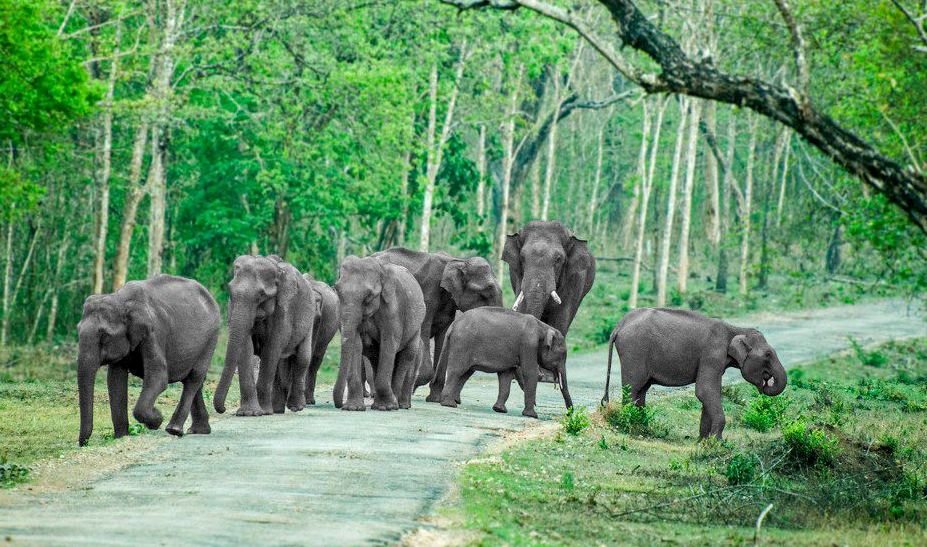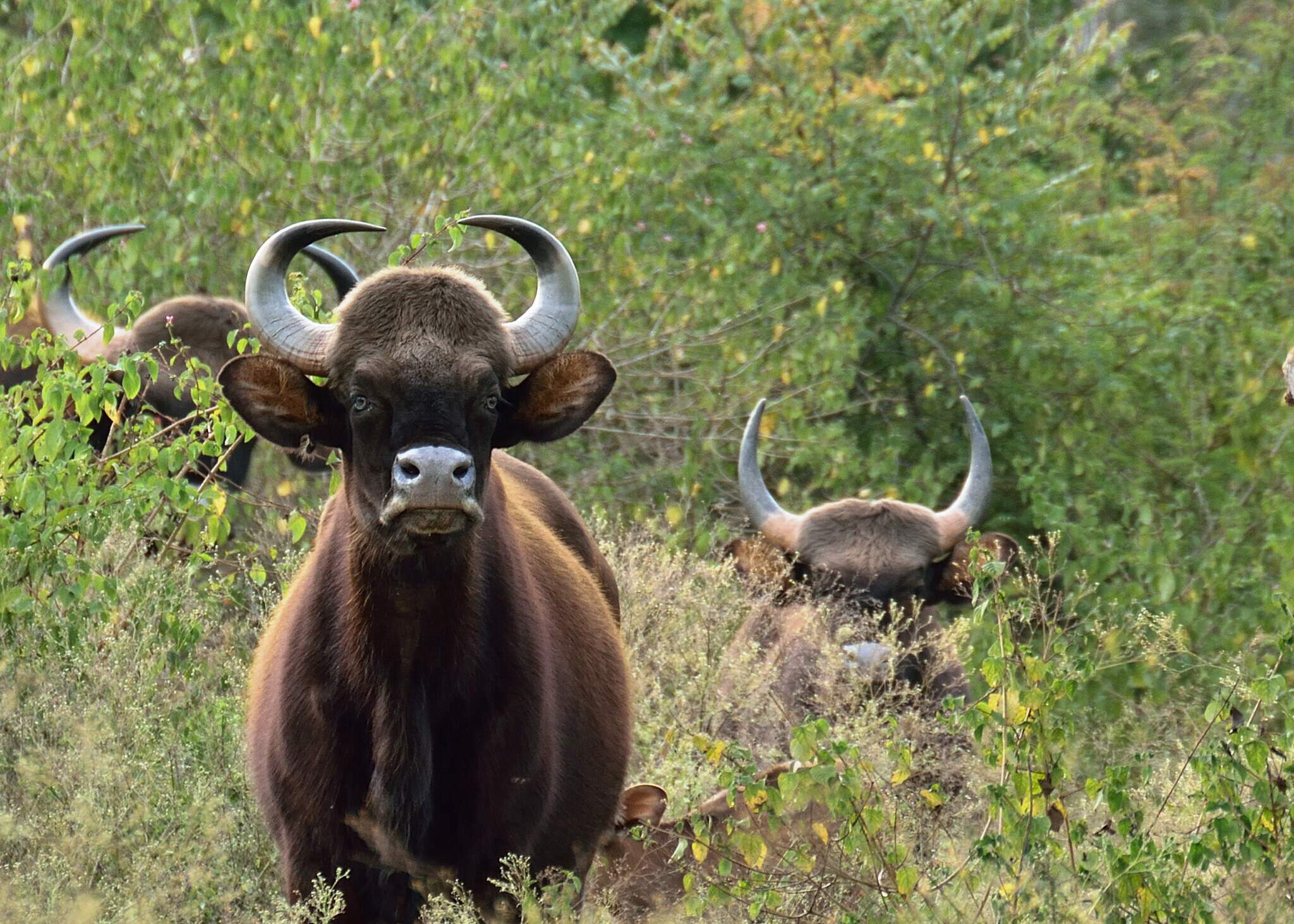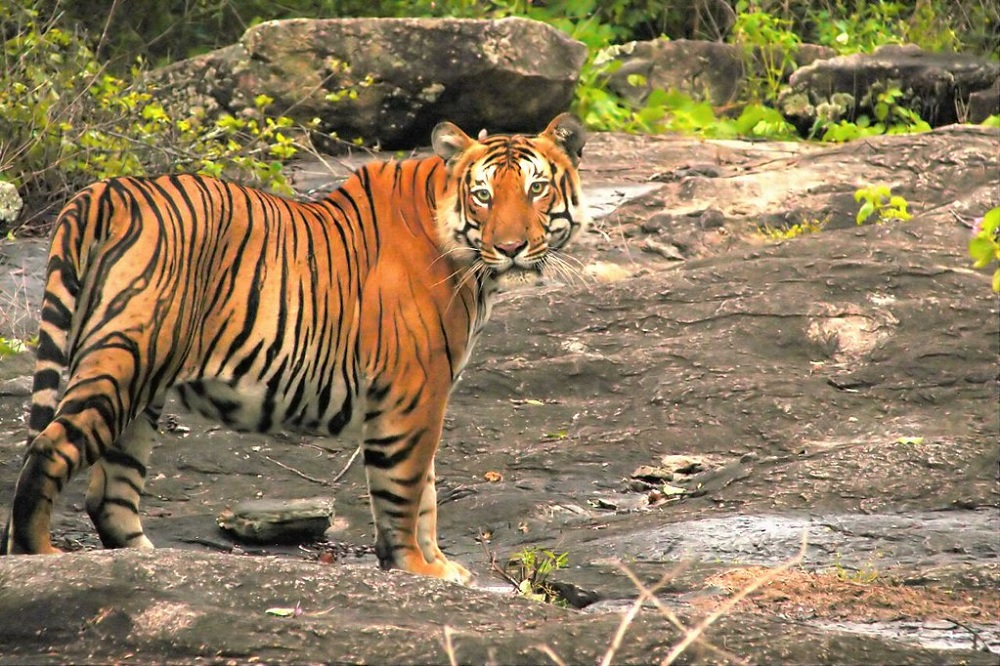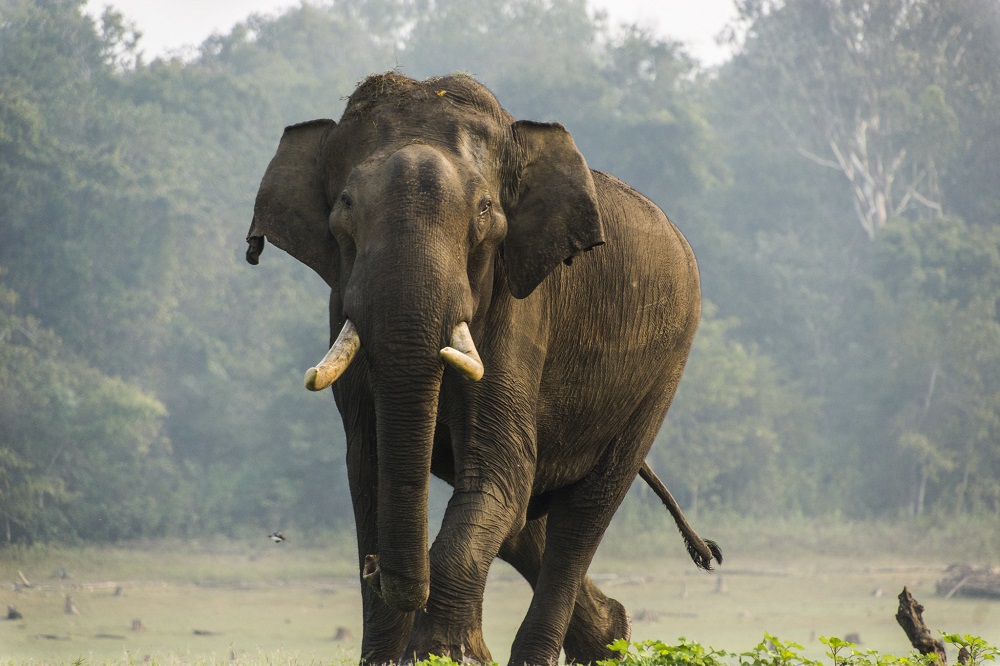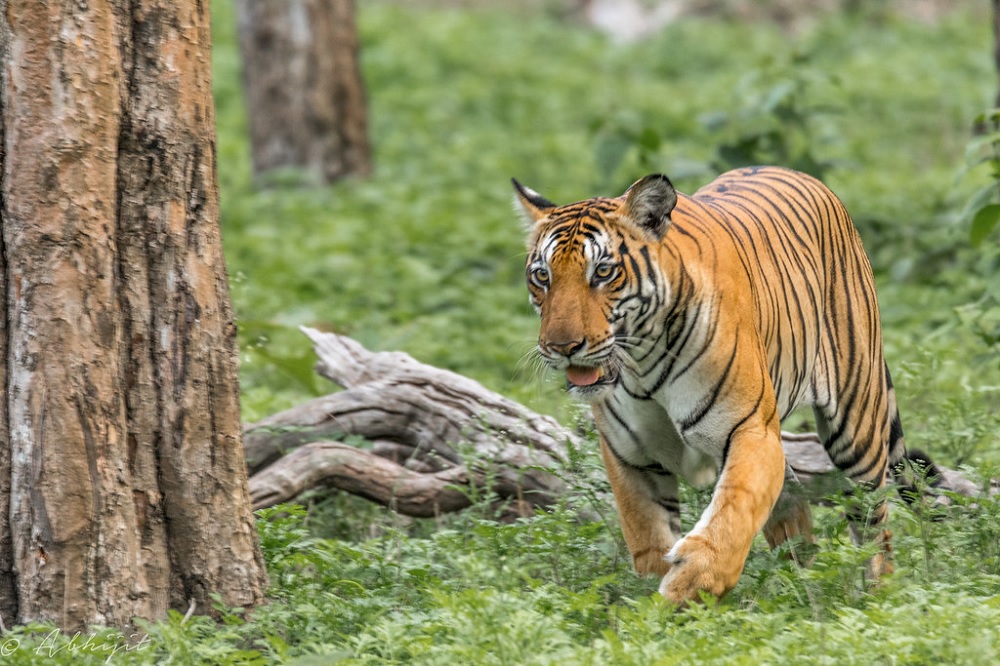Bandipur National Park
Bandipur National Park is located in Karnataka, South India. This park is famous for its wildlife riches. The park covers 874 square km, which covers many endangered species of animals and flora. Bandipur National Park along with Mudumalai National Park, Wayanad National Park and Nagarhole National Park forms the Nilgiri biosphere reserve. This reserve is the largest protected area in South India and the region with highest number of wild elephants in South Asia.
The park is located on the Mysore – Ooty highways. This keeps the park on the route that is covered by numerous tourists, every year. The park has considerable amount of tigers and elephants. Karnataka and Tamil Nadu control this park together. The Tamil Nadu side of the park is called as Mudhumalai reserve. Bandipur national park is recommended for the recognition as a heritage site.
This park suits people who love nature, photography and adventure. Many adventure activities are available within the park. Many resorts and lodges near the park provide packages that include many activities inside the park that are not usually available to all visitors.
Different Areas in the Park
The park is located in a place where the Deccan plateau joins with the Western Ghats. The park’s altitude ranges from 680m to 1,454m.
East– This region is comprised of major forest area and scrub jungle. The forest area of the park contains dry deciduous trees and moist deciduous trees. The shurblands of the park is filled with many flowering plants. Best place for birdwatching. Spotting carnivorous animals is easier here.
Central region – This region has Nugu River which is famous for spotting animals. HimavadGopalaswamy Betta summit is located in this region. This is the highest summit in the park. This summit is famous among trekkers and pilgrims. People trek to the peak to get a panoramic view of the park. There is a Hindu temple in the summit. Sandalwood trees are found here. Elephants are common near the hill due to presence of many watering holes.
North West – This region is famous for Kabini reservoir.It is a major water source in the park. This is the spot to find animals during summer. The forest region in this area is dominated by dry deciduous forest and tropical forest. The place will be lush during monsoon season.
South – Moyar River runs in this region. This is the best spot to find many animals. Deers, elephants, bison, squirrels, jungle cat and other animals are found in this region.
North – This region covers the river and backwater of Kabini. Two streams are also found in this region.Boating and birdwatching are common in this region. When the river dries up in the summer, birds can be spotted in large groups. You can spot many fishes too. Bicycle tours are available in this region.
Flora of Bandipur National Park
The forest region of the park is filled with teak, rosewood, sandalwood, Indian kino tree, Indian laurel, clumping bamboo and giant clumping bamboo. Top flowering and fruit trees to spot are axle wood, black cutch, indigo berry, golden shower tree, black myrobalan, flame of the forest, kadam tree, Indian gooseberry and others. Tamarind, mango and other common trees are also found here.
Fauna of Bandipur National Park
The Bandipur national park is famous for spotting elephants and tigers. Apart from these, top mammals to spot here are bonner macaque, dhole, civet, jungle cat, Indian palm, giant flying squirrel, striped hyena, rusty-spotted cat, Nilgiritahr, leopard, Hanuman langur, cat leopard, four horned antelope, Indian hare red and others.
Birdwatching is an important activity here. Top birds found in this park are peafowl, junglefowl, drongos, redheaded vultures, flowerpeckers, Indian rollers, creasted serpent eagles, bee-eaters, hawk eagles, kingfishers, ospreys and others. There are more than 200 species of birds in the park. The breeding season of birds, start right before the monsoon season.
Top reptiles to spot here are Indian rock python, Indian pond terrapin, flying lizard, mugger, monitor lizard, rat snake and others. Common butterflies to spot here are common rose, common jay, lime butterfly, Malabar raven, crimson rose, blue Mormon and others. Numerous species of butterflies are spotted in the park. Numerous beetle varieties are also spotted here. Many new species of butterflies and beetles that are yet to be identified are also found here. Turtles, crocodiles and frogs are also found here.
Climate of Bandipur National Park
The summer :The summer starts in March and ends in June. The summer is mildly hot in this region. The temperature can reach as high as 38 degree C.
Monsoon :The rainy season starts in July and ends in September. The temperature will be mild and the humidity will be high. The temperature can go as high as 28 degree C. Due to heavy shower, safari in certain regions of the park will be restricted. Spotting animals in rain is very rare. This is the lean season in the park.
Winter : Winter starts in October and ends in March. The climate is misty during this season. The temperature gets as low as 15 degree C.
Best Season to Visit Bandipur National Park
October to May is the right time to visit the park. During peak winter season, migration birds are quite common. Spotting animals during summer is very easy. Animals come to water sources to quench their thirst during summer with their little ones. In short, skip the monsoon season to visit the park.
Wildlife Safari in Bandipur National Park
Bus safari suits people who visit in large groups. A bus safari stretches for 45 minutes.14 people can ride in a bus and all the seats are window seats. During tourism season, van and gypsy are also available. Van can accommodate 25 people at the same time.
Elephant safari stretches for 20 minutes. During tourism season,one-hour elephant safari is also available. The elephant safari is the best to reach deeper spots in the park. Elephant ride is the best to spot tigers and other carnivorous animals that are found deep in the park.
If you want to spot many animals, jeep safari is the best one. For photography, this is the most recommended one. A jeep can accommodate maximum six people. Jeep can be hired for a single person too. A jeep trip stretches for 2 to 3 hours. Jeep night safari is available in the park by some jeep drivers. However, night safari is illegal and it is better to avoid.
Bullock cart rides are available through the scrub jungle. People who want to enjoy a picnic in the park choose this option. The park does not provide this ride. It is usually a part of any tour package by resorts near the park. Spotting animals is rare in this region. Bicycle tours are also available during peak tourism season by resorts near the park. Trekkers take up walking tours in the park. There are two routes in the park. A guide is mandatory for those who want to take up trekking. Night trekking is available in the park with experienced trekkers. Only expert trekkers should try the night trip. Trekking without prior permission is illegal inside the park.
Wildlife Safari Timings
- The bus safari is available between 6:30 am and 9:00 am and between 3:30 pm to 5:30 pm.
- Elephant safari will be available between 10 am and 11 am.
- Jeep safari is available from 6:00 am to 9:00am and from 4:00 pm to 6:00 pm.
Note : No safari is allowed after 6:00pm in the evening. The safari timings and duration changes with season, weather conditions, crowd and availability of vehicles.
How to Reach Bandipur National Park
The nearest international airport is located in Bangalore, which is 255 km away from the park. A lot of cars and buses are available from Bangalore to reach Bandipur. Coimbatore airport is located just 84 km away from the park.
Nearest railway station is located in Mysore which is just 80 km away from the city. Bandipur is connected with a lot of cities and states through railways. From railway station, cabs or buses can be hired to reach the park or Bandipur.
Private and government buses run from all major cities in Karnataka and Tamil Nadu to Bandipur. Cabs can be hired from any major city to reach Bandipur. The road route via Mandyaand Ramanagar is in good condition with four-lane road. The road route via Kanakpura and Malavalli is just a double road. Road route via Mysore is a six-lane bypass road. It is the most opted one.
Distance between major cities and Bandipur National Park
- Mysore and Bandipur national park – 80 km
- Bangalore and Bandipur national park – 220 km
- Ooty and Bandipur national park - 80 km
- Coorg and Bandipur national park – 200 km
- Wayanad and Bandipur national park – around 80 km
- Calicut and Bandipur national park – about 140 km
- Kabiniand Bandipur national park – 94 km
Best Places to Stay in Bandipur National Park
- MC resort, Chamarajnagar
- Jungle Home, Bangalore
- Nijaguna Park, Chamarajnagar,
- Hotel Misty rock, Gundluete
- Bandipur wildlife resort, Chamarajnagar
- VanaVihar, Mysore
- Tiger ranch, Mangala village road
- Deer valley resort, Mangala village road
- Windflower resorts and spa, Mangala village road
- The country club, Mangala village road
Conservation History of Bandipur National Park
Like many other national parks, the Bandipur national park was the hunting region for kings. Due to the rich flora in the region, herds of elephants and a few tigers were found.
Hunting elephants and deers was a famous sport among royal people. In 1932, the king of Mysore created the Bandipur sanctuary, which was just 90 square km in area. It was called as Venugopala Wildlife Park. In 1973, 800 square km were added to the wildlife park and was renamed as the Bandipur national park.
It was then added to the Nilgiri biosphere. Due to the rich elephant population, it was taken under Project Elephant. In 1973, it also came under Project Tiger and the park has around 80 tigers.


